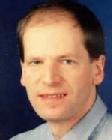saba: W; Meersburg funktion of Knobs
saba: W; Meersburg funktion of Knobs

My apologies for the incorrect model designation in the Title
The FM unit is installed in the Meersburg W according to the rear panel
Reviewing the schematic for the model 840-780a (dated 6.6.50) and presumably for radios produced in 1950/51, I have not completely understood the function of the right front knob and the lower right rear knob on the side of the radio.
I believe the use and function of the lower right rear knob is the same as that of the Saba S455WK that I have.
I believed the right front knob, however, is used to select the Mode of Operation as follows:
with 5 possible selections, I estimated the Modes to be---
1. TA only
2. All except UKW operation
3. UKW only
4. UKW muting
5. Sensitivity selection (weak or strong) and EM4 circuitry correlation
I realize there were many issues being resolved, after the Copenhagen convention, and improvements to reduce interferences and allow for interstation suppression of "excess noise". The use of the EQ80 FM discriminator (the phase detectors) appears to be somewhat brief in FM circuit developments, and also possibly added to the earliest models to reduce the number of tubes in the radio.
I would be most appreciative to determine the proper use and function of these knobs.
Respectfully,
Robert
Dieser Beitrag wurde am 10.Aug.05 14:32 von Robert Sarbell editiert.
This Post was copied here by Henning Oelkers
To thank the Author because you find the post helpful or well done.
Funktion of Knobs

i took a look at the Circuit Diagram and the Technical Data Sheet of the Meersburg W.
The Data Sheet says, that the set is Equipped with the SABA MHG Circuit, to set the Bandwith of the IF Amp to 3, or 6, or 10 kHz. This Switch is combined with the Switch to select the "Sound" of the AF Stage. This Switch has 5 Positions, and is shown in the upper right hand section of the Circuit Diagram. ( 840-760d).
There is a Text about "SABA MHG Schaltung" in the RM, in German.
The Other Switch has 6 Positions, which are TA ( Pickup ), Long wave, Medium Wabe, Short Wave 2, short Wave 1, and UKW. There is a Table shown in the lower left hand Corner of the diagram, which shows , which of the Switches is closed at what Position. The Switches are identified by S1 to S18, and You will find the Number beside each switch.
The UKW Unit is connected to the 5 port solder Strip, shown in the Circiut Diagram just above the right EAF42, and described " z. UKW-E "
this is, what i cold find out with the Informations on the Meersburg W.
Hope this Helps,
Henning Oelkers,
Berlin
To thank the Author because you find the post helpful or well done.

Thank you again. I certainly saw the coupled switch assemblies in the upper portion of the schematic, but had not correlated the respective circuits in the UKW schematic. to provide the 3, 6, or 10kHz selection of sound to the AF stage.
I shall review the SABA MHG Schaltung text that you referenced.
You have clarified all that I missed.
Respectfully,
Robert
To thank the Author because you find the post helpful or well done.

Dear Robert,
just a short hint: The Bandwith of the IF Amplifier is switched between 3, 6, and 10 kHz, not the AF Amplifier. However, the Frequency Response of the AF ( Audio ) Stage is also selectable, with the right part of the same Switch..
The Bandwith of the IF Amplifier is selected, by feeding back a selectable Amount of the IF Signal (~ 473 kHz ) from the last IF stage to different points in IF Signal Path, this reduces the Amplification at the Center Frequency by a given Amount, and as a Consequence, the Bandwith is raised.
In the Text about the SABA MHG ( MHG stands for Mehrfach Hochfrequenz Gegenkopplung ) ( Multi High Frequency Feedback ). there are also pictures, to show the effect.
Best Regards,
Henning Oelkers
To thank the Author because you find the post helpful or well done.
Unusual request

I knew there was a NOTE fo the technician when he is going to perform alignments of the IFTs, that the tools should be made from the PVC-type material in order not to demolish the core of the spool. Even the dimensions are provided to make your own tools for the different spools in the IFTs - very helpful.
I also reviewed some of the text but it is VERY slow for me unless I use the Babelfish translator. However, the files are not in the text format to copy and paste into the babelfish.
I have solved my problem with the transliteration of the SABA MHG files into a "text document" that is translatable. I find the material to be as interesting as stated by the lecturer Herr Hermann Freudenberg(GFGF, Netphen; 2003) in June 2003.
I have already advised my very good friend and neighbor to the south about the Stufen 1-2-3 for the Schmal, stufen 4 for the mittel, and stufen 5 for the breite selections; and the selectable AF stages. . . . . . .knob pulled out and knob pushed in.
My Saba S455WK right knob has the "in-out" functions, but the rotation is through a pot and there are NO detents.
Respectfully,
Robert
To thank the Author because you find the post helpful or well done.